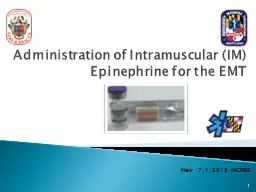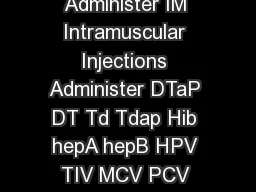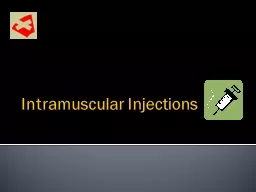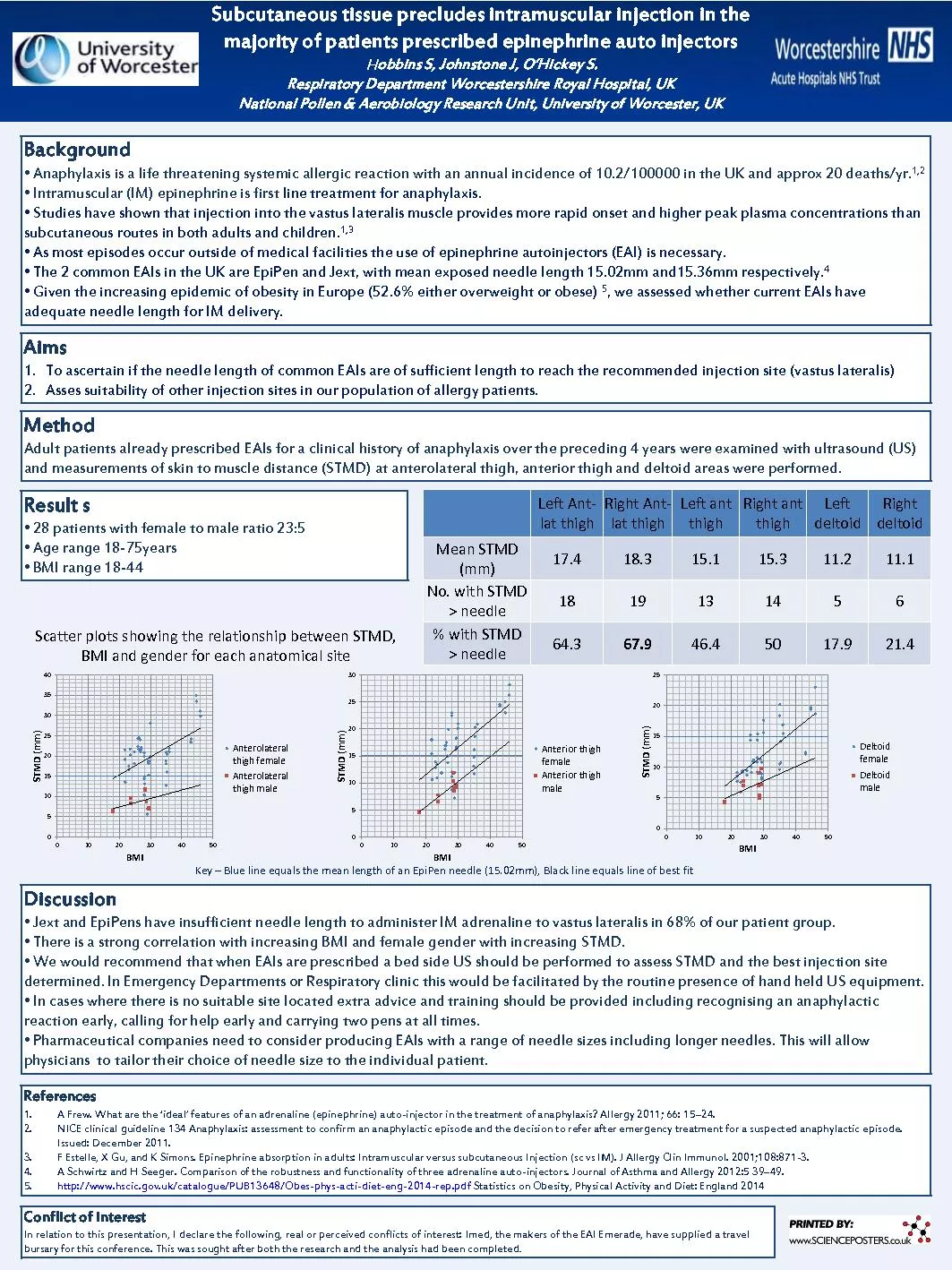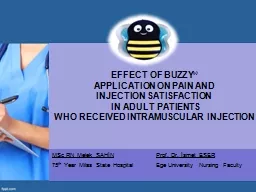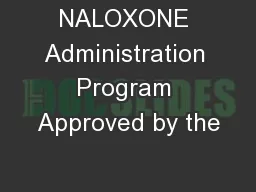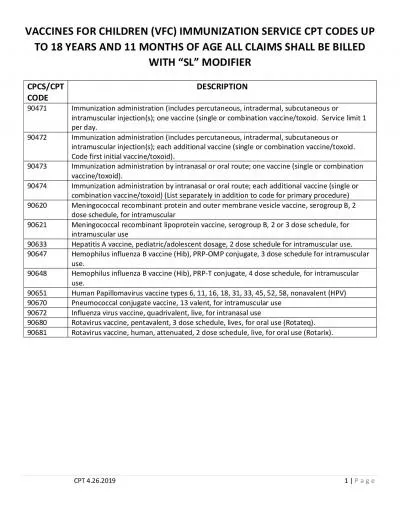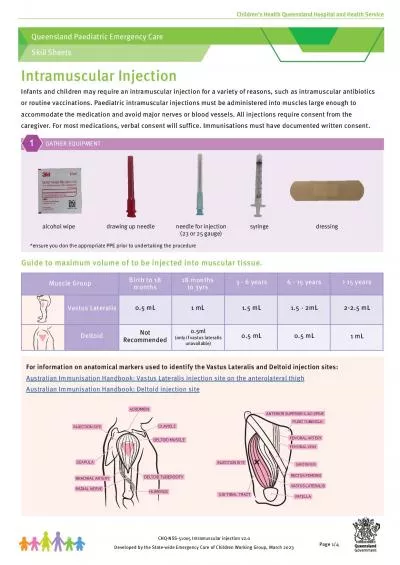PPT-Administration of Intramuscular (IM)
Author : lindy-dunigan | Published Date : 2015-11-28
Epinephrine for the EMT New 712015 MCFRS 1 The providers will summarize the need for this change from an epinephrine auto injector The provider will define the
Presentation Embed Code
Download Presentation
Download Presentation The PPT/PDF document "Administration of Intramuscular (IM)" is the property of its rightful owner. Permission is granted to download and print the materials on this website for personal, non-commercial use only, and to display it on your personal computer provided you do not modify the materials and that you retain all copyright notices contained in the materials. By downloading content from our website, you accept the terms of this agreement.
Administration of Intramuscular (IM): Transcript
Download Rules Of Document
"Administration of Intramuscular (IM)"The content belongs to its owner. You may download and print it for personal use, without modification, and keep all copyright notices. By downloading, you agree to these terms.
Related Documents

